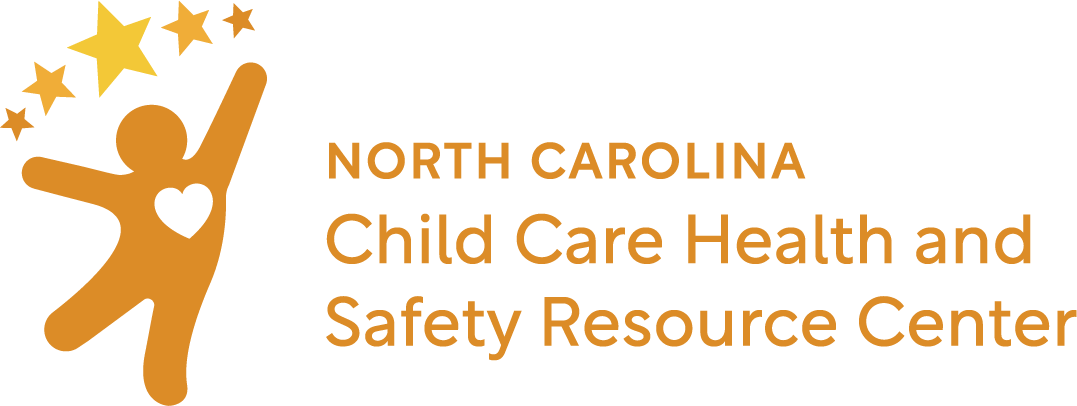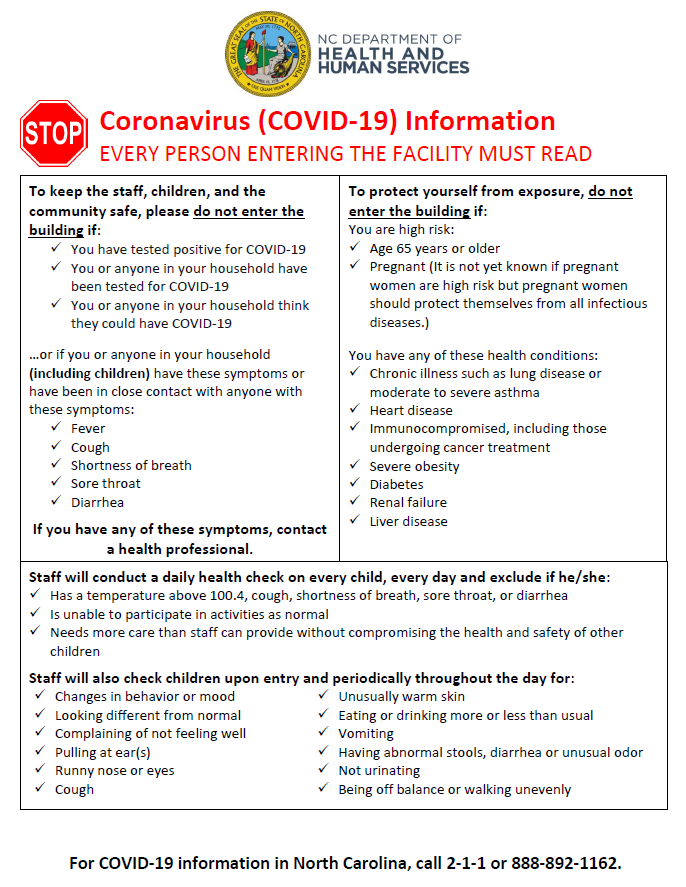Now available are recorded COVID-19 webinars held by DCDEE for child care providers during the week of March 29, 2020. The webinars included discussions on Emergency Child Care Provider Application, available financial assistance information and health, safety and screening guidelines.
Learn more.
The information below includes other information topics and recent updates.
Child Care Access & Financial Assistance Available for Essential Workers
We have two resources for essential workers (as defined in Executive Order 121) who are in need of emergency child care.
- We partnered with the NC Child Care Resource & Referral network to launch a hotline, 1-888-600-1685, to connect families with child care programs that have agreed to meet updated health, safety and operational guidelines.
- For those essential workers who need it, financial assistance for emergency child care is available.
Learn more.
Child Care Payment Policies Released
On Friday, April 3, DCDEE released COVID-19 Child Care Payment Policies, which provides detailed information about policy changes that apply to licensed or regulated child care facilities.
Learn more.
COVID-19 Dashboard Updated
Data on COVID-19 can be found on the Dashboard. In addition to information on number of laboratory-confirmed cases, hospitalizations and deaths, there is demographic information and data about outbreaks in congregate settings.
COVID-19 Dashboard
New Video on Reducing Anxiety and Stress
Dr. Carrie Brown, NC DHHS Chief Medical Officer of Behavioral Health and IDD, has a new video on ways to manage stress and anxiety during COVID-19 social distancing, quarantine and isolation.
Video with Dr. Brown



